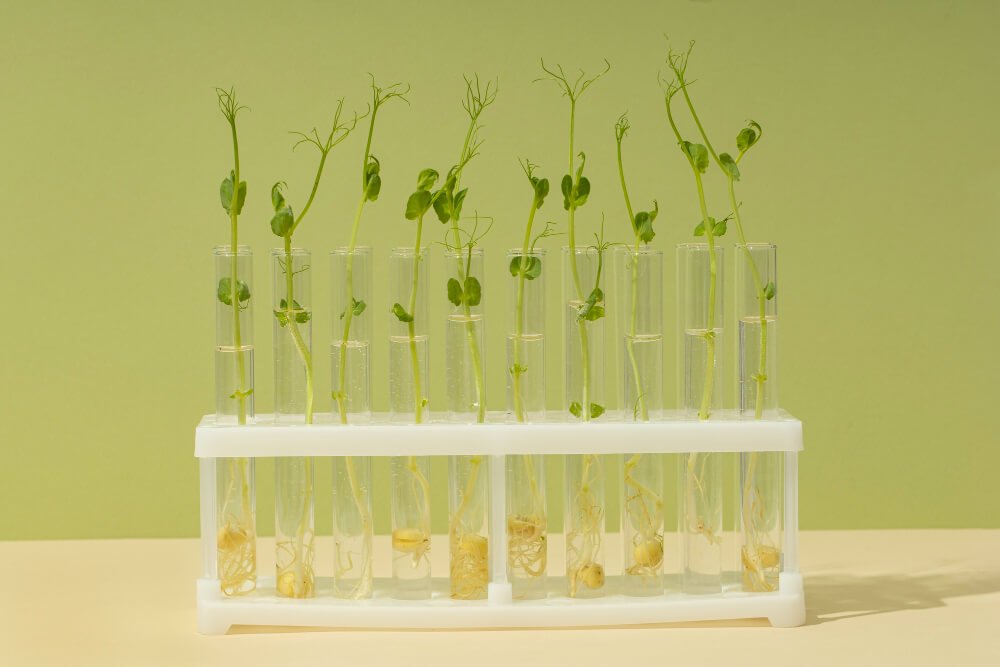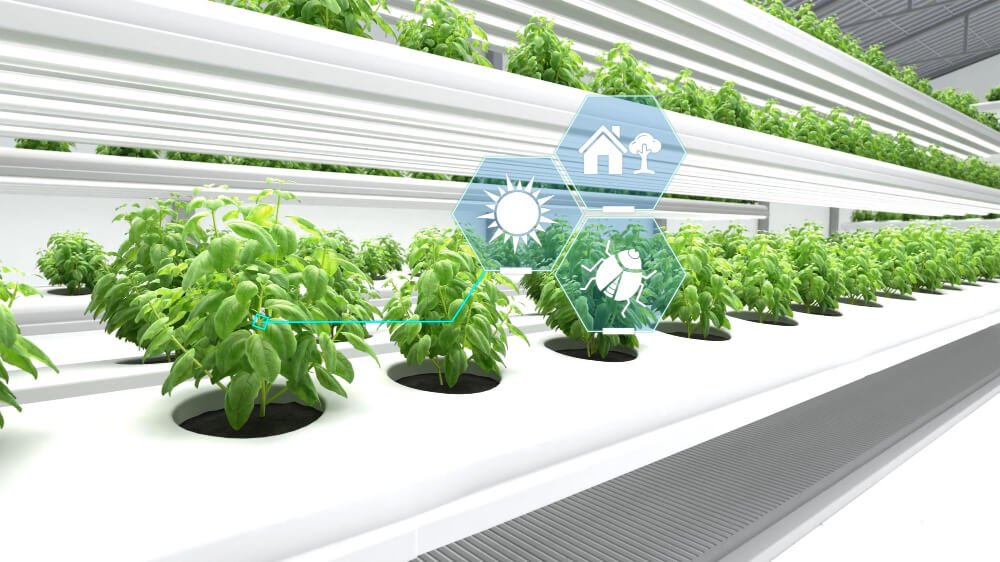How does biotechnology impact agriculture? Advancements for Enhanced Crop Yields and Quality
What is biotechnology in agriculture?
The global demand for plant-based foods has seen a substantial increase, largely driven by growing consumer awareness of health, environmental sustainability, and animal welfare concerns. According to the Plant Based Foods Association, sales of plant-based foods have grown significantly, outpacing sales of conventional food products. This rising trend underscores the necessity for enhanced agricultural technologies to meet consumer demands efficiently and sustainably.
However, crop production is not without its challenges. Factors such as climate change, soil degradation, and water scarcity pose serious threats to agricultural productivity. For instance, the Food and Agriculture Organization of the United Nations reports that approximately 12 million hectares of productive land are lost annually due to drought and desertification, which could potentially undermine crop yields worldwide. Additionally, the increasing incidence of pest and disease outbreaks further complicates the situation, emphasizing the urgent need for advanced crop technologies. These technologies, including genetic engineering and CRISPR, are pivotal in developing crop varieties that can withstand these challenges, ensuring stable and increased crop yields necessary to support the burgeoning plant-based food market.
Genetic Engineering and CRISPR
Genetic engineering and CRISPR (Clustered Regularly Interspaced Short Palindromic Repeats) are two pivotal biotechnologies revolutionizing modern agriculture. Genetic engineering involves directly modifying the DNA of an organism to enhance certain traits such as yield, nutritional value, or resistance to pests and diseases. This is achieved by adding or silencing specific genes within an organism’s genome. The technology has been instrumental in producing crops that can grow in less-than-ideal climatic conditions, resist pests without chemical pesticides, and achieve higher yields to meet global food demands.
CRISPR, on the other hand, is a more recent and advanced form of genetic editing. It offers a highly precise method for altering an organism’s genetic structure by targeting specific sequences of DNA and editing them with unprecedented accuracy. This technology allows for the rapid development of crop varieties with enhanced traits by either knocking out undesirable genes or inserting beneficial ones. Its precision reduces the chances of off-target genetic changes, making it a safer and more reliable method than traditional genetic engineering.
Both technologies are crucial for sustainable agriculture as they enable the production of more resilient, nutritious, and high-yielding crops. This is especially relevant in the context of a growing global population and the increasing environmental challenges that threaten traditional farming practices. Through genetic engineering and CRISPR, scientists can create crops that not only thrive under these challenging conditions but also contribute to a more sustainable agricultural landscape.
The Science of Genetic Engineering and CRISPR

Genetic Engineering
Genetic engineering involves the deliberate modification of an organism’s genes to achieve desired traits. In agriculture, this technology is primarily used to enhance crop yield, improve resistance to pests and diseases, and increase tolerance to environmental stresses. For example, by inserting a gene that codes for a specific protein, scientists can create crop varieties that are more resistant to insects or diseases, thereby reducing the need for chemical pesticides and increasing yield.
CRISPR Technology
CRISPR technology is a groundbreaking tool in molecular biology that allows for very precise and efficient genome editing. It works by utilizing a guided RNA sequence to identify specific DNA sequences, and a CRISPR-associated protein (Cas9) to make cuts at these locations. Once the DNA is cut, the cell’s natural repair mechanisms kick in, allowing for the addition or removal of genetic material. This method enables scientists to edit the genes of plants with high precision to enhance desirable traits such as drought resistance or nutritional content.
Comparative Analysis
Both genetic engineering and CRISPR offer significant benefits to crop development, but they differ in terms of precision, safety, and public perception. Traditional genetic engineering can sometimes result in unintended genetic changes, as it involves introducing foreign DNA into a plant’s genome, which can integrate at random locations. This randomness can potentially disrupt other genes and lead to unforeseen effects. CRISPR, by contrast, offers more precision with fewer unintended consequences, which theoretically enhances its safety profile. However, both technologies face public scrutiny and regulatory challenges. Public perception often hinges on concerns about naturalness and safety, with CRISPR sometimes viewed more favorably due to its precision and potential for non-transgenic modifications. Nonetheless, both technologies are critical for advancing crop development and ensuring food security in an increasingly unpredictable global climate.
Case Studies of Modified Crops

Drought-Resistant Corn
One significant breakthrough in genetic engineering is the development of drought-resistant corn varieties. These varieties have been engineered to express specific genes that help the plant manage water stress more efficiently. This adaptation allows the corn to maintain productivity even under reduced water conditions, leading to more reliable yields. Such advancements are crucial in areas prone to drought, ensuring food security and farmer income stability despite fluctuating environmental conditions.
High-Yield Rice Varieties
Advances in genetic modifications have also led to the development of high-yield rice varieties. These varieties have been engineered to optimize photosynthesis and reduce the plant’s growth cycle, allowing more crops to be grown within the same timeframe. Additionally, these rice plants have been designed to produce more grains per plant while requiring fewer inputs such as fertilizers and water, making rice cultivation more sustainable and efficient.
Nutrition-Enhanced Wheat
Utilizing CRISPR technology, scientists have successfully increased the nutritional content of wheat. By editing genes directly involved in nutrient synthesis, varieties of wheat now have enhanced levels of proteins, vitamins, and minerals. This modification not only makes wheat a more valuable crop for farmers but also improves its utility in plant-based diets, where nutrient density is a significant concern. The precision of CRISPR ensures that these nutritional enhancements are achieved without compromising the plant’s growth and yield characteristics.
Future Directions
Emerging Trends in Crop Biotechnology
The frontier of crop biotechnology is rapidly advancing, with new research areas continually emerging. Innovations in genetic engineering and CRISPR technologies are increasingly focused on not only enhancing crop yields and nutritional content but also on improving crop resilience to climate change. Future developments may include more sophisticated gene editing tools that can target multiple traits simultaneously, such as pest resistance combined with drought tolerance. Additionally, the exploration of gene drives for weed control and the use of synthetic biology to create completely novel organisms represent exciting prospects that could transform agricultural practices.
Integration with Other Agricultural Technologies
The integration of genetic advancements with other agricultural innovations, such as precision farming and artificial intelligence (AI), is setting the stage for a new era of smart agriculture. Precision farming technologies, which utilize sensors and data analytics to optimize field-level management, can be paired with genetically enhanced crops to maximize efficiency and yield. For example, AI can analyze data from satellite images and ground sensors to provide real-time insights on crop health and soil conditions, tailoring watering and fertilization schedules to the specific needs of genetically optimized crops. This convergence of technologies not only boosts productivity but also enhances sustainability by reducing waste and minimizing environmental impact.




